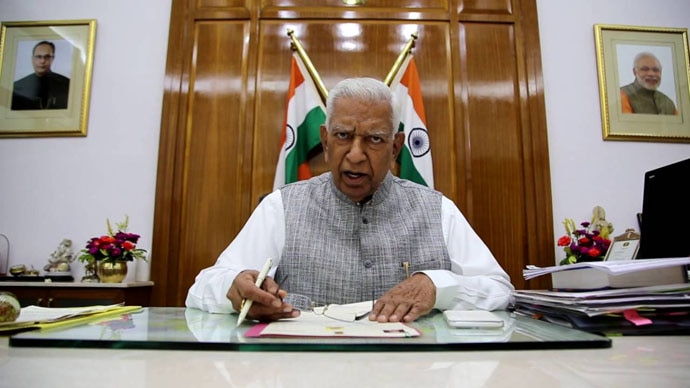Karnataka drama raises questions on practice of nominating Anglo-Indian MLAs

Is it time to let go of a provision that many consider an arcane Raj relic?
The process of the formation of a democratic government in Karnataka is well out of the hands of voters now, with the contest coming down to which political party can best exploit loopholes in India’s institutions and the Constitution.
Even as furore rages over Governor Vajubhai Vala appointing a BJP legislator, KG Bopaiah, as the pro-tem speaker, another of the governor’s moves, of nominating an Anglo-Indian member to the Assembly, has been stayed by the Supreme Court pending the floor test on May 18. The nomination had been challenged by the Congress-JD(S) combine, and the Anglo-Indian community itself.
However, the debate has put the spotlight on a question that has been raised before – is the system of nominating Anglo-Indian legislators still relevant, or is it time to discard this as an arcane Raj relic?
Times have changed drastically since the Constitution was adopted. In the present context, does the Anglo-Indian community need special representation in our legislative bodies? If yes, why shouldn’t the same privilege be extended to other small minorities, such as Parsis?
Also, has the provision helped the community, or has it become just a tool for political parties to shore up their strength in the House?
On the other hand, if the constitutional provision is scrapped, will it mean total political black-out for a community that has a very small population now, but a distinct identity, and that has contributed to India culturally as well as economically?
What is the provision
An Anglo Indian is defined in the Constitution as “a person whose father or any of whose other male progenitors in the male line is or was of European descent but who is domiciled within the territory of India and is or was born within such territory of parents habitually resident therein and not established there for temporary purposes only.”
The President of India can nominate two members of the Anglo Indian community to the Parliament.

In the case of states’ Legislative Assemblies, this power is with the Governor. Article 333 of India’s Constitution says: “The Governor of a State may, if he is of opinion that the Anglo Indian community needs representation in the Legislative Assembly of the State and is not adequately represented therein, nominate one member of that community to the Assembly.”
At present, Anglo-Indians have been nominated as members in 10 state Assemblies –West Bengal, Uttar Pradesh, Kerala, Tamil Nadu, Uttarakhand, Karnataka, Andhra Pradesh, Telangana, Jharkhand and Maharashtra.
The provision was not a permanent one, but was subject to periodic reviews. In fact, the cap of one nomination was introduced through an amendment in 1969. However, successive governments have chosen not to scrap the provision altogether.
When the facility was introduced, the reasons given were that every state had proportional representation in the Lok Sabha, but Anglo-Indians had no state to call their own. The community was too tiny to ever get elected on the basis of majority votes either at the Centre or in state Assemblies, and hence needed a helping hand from the Constitution.
Also, after Independence, the Anglo-Indians found themselves in a specially vulnerable position. While for many, India was home, they had been supporters of the British Raj, and had not contributed much to the freedom movement. There were fears that they would be victimsed in the new, free India, and hence safeguards were put in to ensure their interests were politically represented.
Today, the numbers of the community have fallen from the around 5 lakh in 1947 to an estimated 125,000. However, the community has remained uncounted since a 1941 census, and other estimates peg their numbers at around 4 lakh.
Political pawns
Karnataka assembly is not the first instance where questions have been raised on the nomination of the Anglo Indian member. As an article in The Hindu lists, in Jharkhand in 2005, just before JMM’s Shibu Soren was to prove his majority in the House, Alfred George de Rozario was nominated under Article 333. This appointment was challenged by the BJP, and stayed by the court.

In Uttarakhand in 2007, the BJP nominated Karen Meyer Hilton under Article 333, taking its strength of 35 seats in the 71-member House to 36.
So should the provision go?
The hostilities the Anglo-Indians feared in 1950 no longer exist. Over the years, while many members have left the country, those who stayed on have increasingly assimilated themselves in the local cultural fabric, learning the local languages instead of speaking only English, alongside and more Indians adopting western dressing, a more Anglo-Indian trait.
However, that does not mean they do not retain a unique identity anymore. As their numbers dwindle, the community is fighting hard to retain their distinct culture.
Arguments have been made that two reserved seats in Lok Sabha and one in various states is disproportionately large for the community’s population. However, democracy should not mean advantage majority. It is the smaller communities that need systems to defend their interests.
For Anglo Indians to retain their identity, they need political visibility and representation. Two seats in the Lok Sabha and 10 in states is not too big a price to pay for safeguarding a minority that is an important representative of India’s past, and despite its tiny population, that has contributed to the country in multiple ways.

